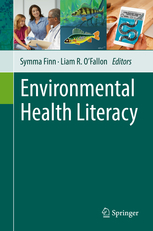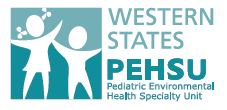 Mark Miller, WSPEHSU co-director, co-authored with Phil Brown, Stephanie Clark, Emily Zimmerman, and Maria Valenti, a chapter in the new text Environmental Health Literacy, edited by Symma Finn and Liam R. O’Fallon. The chapter is “Health Professionals’ Environmental Health Literacy.”
Mark Miller, WSPEHSU co-director, co-authored with Phil Brown, Stephanie Clark, Emily Zimmerman, and Maria Valenti, a chapter in the new text Environmental Health Literacy, edited by Symma Finn and Liam R. O’Fallon. The chapter is “Health Professionals’ Environmental Health Literacy.”
Chapter abstract:
Health care providers play an important role in communicating health risks to patients, community residents, and public health agencies. For their own patients, the role of the provider could include taking an environmental health (EH) history, answering patient questions about exposures, providing anticipatory guidance to prevent exposures, and remaining alert to the possibility of toxicants or other environmental influences causing acute or chronic illness. However, few clinicians feel confident in discussing environmental risks, although patients rate them of high concern. There is ample evidence from clinician surveys and case reports of EH trainings to show that health professionals are not sufficiently literate in EH. This is also evident in community-engaged research projects. Lack of training and knowledge on the links between environment and health and lack of available clinical tools for both provider and patient education contribute to the inattention to this topic in the clinical, public health, and community settings.
From the dust jacket:
“Environmental Health Literacy is vital for making informed decisions aimed at preventing illness and disease. This well-organized book offers readers an accessible introduction to environmental health literacy. It details the emergence of EHL, provides a range of case studies, and describes approaches being used to build EHL. It’s inspiring and a must-read for anyone interested in environmental health communication and community engaged research.”
Linda S. Birnbaum, Ph.D., D.A.B.T., A.T.S., Director, National Institute of Environmental Health Sciences and National Toxicology Program

